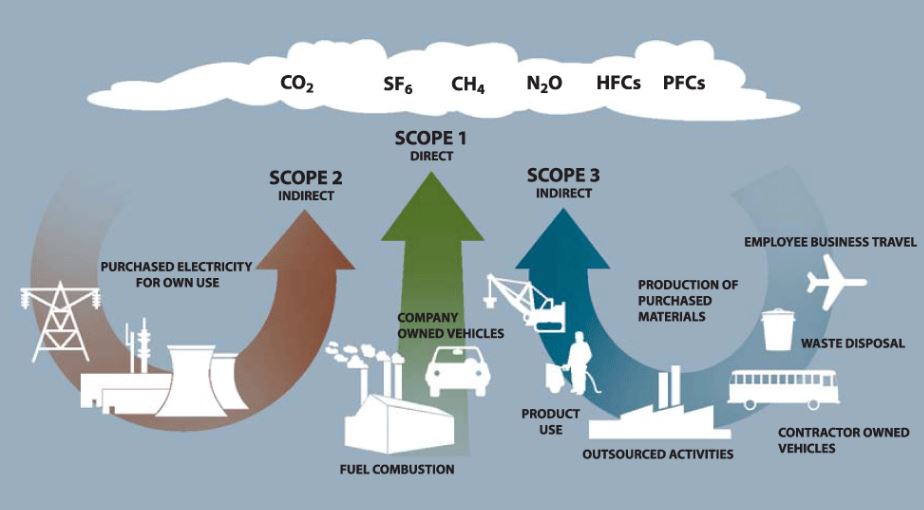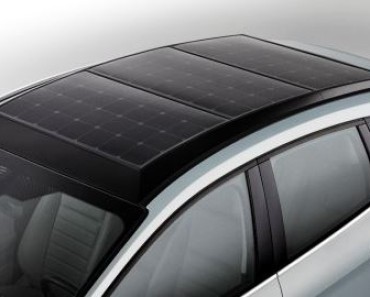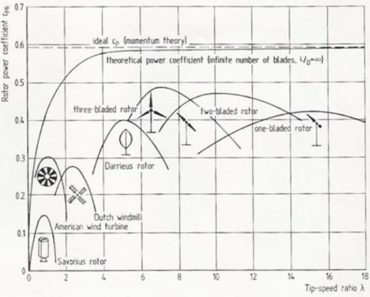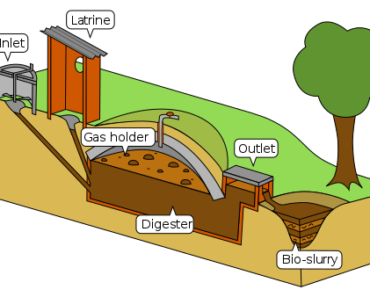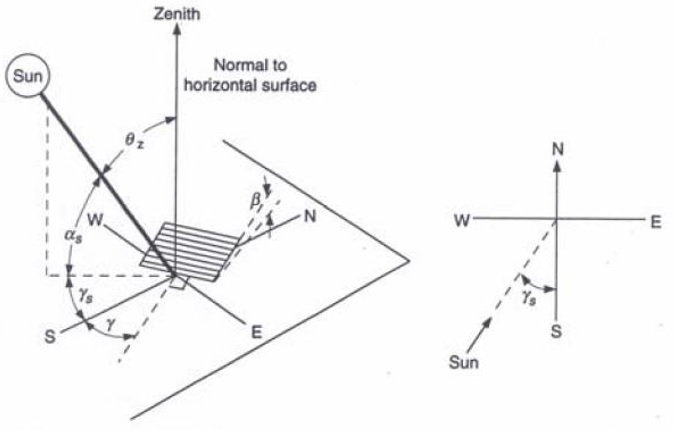In this article the scope of GHG emissions will be covered. What activities and resources are included in estimating an organization’s total emissions will be explained in this post.
In many countries, it is compulsory to report the Greenhouse gas emissions on an yearly basis. To make the results more reliable and consistent, a framework has been developed by Wold Resource Institute called the GHG protocol.
The GHG protocol breaks down the scope of emission in to three parts:
- Scope 1 emissions (direct)
- Scope 2 emissions (indirect)
- Scope 3 emissions (indirect with limited control)
Scope 1 emissions
Scope 1 are the direct emissions while scope 2 and 3 are the indirect emissions. In scope 1, we account for emissions that result because of direct burning of fossil fuel on site. They also include any emissions because of refrigerant leakage. Similarly emissions because of the use of organizations vehicles are also included in Scope 1. Lastly any emissions due to an industrial process on-site for instance ammonia release or other gas released (e.g. SF6) are also accounted for in scope 1.
The thing to remember about scope 1 is that it accounts for all on-site emissions and also includes emissions by vehicles based on that site. The vehicles may not remain on-site but their emissions nonetheless are included in this category.
Scope 2 emissions
Scope 2 is the indirect energy emissions because of energy usage (mainly electricity usage). Most organizations used electricity that is purchased from the grid. Thus the emissions for the electricity used are not on site but offsite.
Emissions occurs both because of electricity generation (i.e. in a power plant) and losses in its distribution. It should be noted that electricity emissions can vary greatly because of the fuel used for electricity. Coal produces the most emissions. Electricity can also be generated from heavy furnace oil or gas which is relatively cleaner. The cleanest source of electricity is renewables.
Scope 3 emissions
Scope 3 emissions are all the other indirect emissions that result because of organizations activity other than on site fuels use, on site emissions and electricity usage. Scope 3 emissions are often the largest category and can account up to 80% of an organizations emissions. However they are often overlooked an unreported.
So things like emission for purchased goods and services, capital goods, waste generation employee commuting and business travel are just a few of the 15 categories that are included in scope 3. For the sake of simplification, we divide the scope 3 emissions into two sub categories namely upstream and downstream.
Suppose your organization produces a product. That product is let’s say a table. All the emission that result in acquisition of wood and other materials (nails, paint, varnish) to its transport on site are upstream scope 3 emissions. The table is made which results in a lot of woodchips and sawdust waste. This wastage will also be accounted for in upstream emissions unless recycled. Than the table is shipped to all the distribution centres. The emission that result because of distribution of the table and its disposal once it is thrown away are downstream emissions.
So what are the emissions that are not included in Scope 3. Well suppose you run a supermarket. The customers that come to your supermarket use cars and purchase items. The customers CO2 emissions because of their travelling are not included in any scope. It is something that is beyond the control of organization.
Scope 1, 2 and 3 categories allow us to do it to identify the emissions which have our highest influence. All emissions under the scope 1 and 2 have our direct control. This categorization also allows us to identify emission hotspots. Many of these hotspots may lie in scope 3.
Once the hotspots are identified than the organization can focus on them to improve business efficiency. It is very common to have 80-20 rule even in the case of GHG emissions. i.e. 20% of the organizations activity may result in 80% of its emissions.
Experts have suggested that it is often “Purchased goods and services “in the scope 3 category that account for the highest emissions.
If the GHG protocol is understood properly one can easily estimate the CO2 emission of an organization. There are however carbon accounting firms and carbon accounting software’s available to help you in this regard.
A chart is included in the student resources to help you identify scope 1 , scope 2 and scope 3 emissions.
Please feel free to share this article using the buttons below.
Also read

